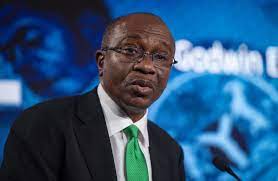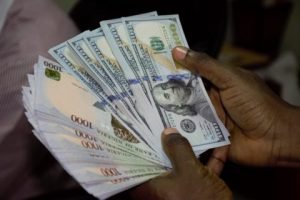
To tapering its interventions, the Central Bank of Nigeria (CBN), this year alone, released fresh N12.65 billion under its flagship Anchor Borrowers’ Programme (ABP).
The amount, which was disbursed to three agriculture projects in January and February, brings the total disbursement through the scheme to N1.09 trillion.
So far, over 4.6 million smallholder farmers cultivating (or rearing) 21 agricultural commodities on 6.02 million hectares of farmland have benefited from the programme, the apex bank said in a communiqué on the outcome of the Monetary Policy Committee (MPC) meeting held on Monday and Tuesday.
In the same period, a fresh N23.7 billion was disbursed as part of the bank’s commitment under the N1 trillion Real Sector Facility and another N3.01 billion under the Nigerian Electricity Market Stabilisation Facility, which seeks to reduce the commercial risk in the power sector and its improved efficiency.
“The Bank released the sum of N23.70 billion under the N1 trillion Real Sector Facility to eight new real sector projects in agriculture, manufacturing and services. Cumulative disbursements under the Real Sector Facility currently stand at N2.43 trillion, disbursed to 462 projects across the country, comprising 257 manufacturing, 95 agriculture, 97 services and 13 mining sector projects…
“The Bank also released N3.01 billion under the Nigerian Electricity Market Stabilisation Facility (NEMSF-2) for capital and operational expenditure of distribution companies (DisCos) aimed at improving their liquidity status and aiding their recovery of legacy debt. This brings the cumulative disbursement under the facility to N254.39 billion,” the authority revealed.
Commitment to the three programmes increased the CBN’s balance sheet by N3.36 billion in January and February alone, coming on the heels of the Bank’s pledge to begin to wane down its special interventions – programmes its critics said are the major cause of the country’s inflation, which hit 21.91 per cent last month.
Last year, the bank said it would begin to wane down the interventions but that it would continue to support sectors that are critical to growth and job creation, including the real sector.
The monetary authority had put the repayment rate of ABP at 52.39 per cent. The balance “was not due for repayment because they are under moratorium due to the COVID-19 forbearance granted to beneficiaries of the CBN’s interventions in March 2020 and extended to February 28, 2022”, a statement by the CBN said.
But the International Monetary Fund (IMF) in its country report titled ‘Nigeria: Selected Issues’, had argued that as of January 12, 2023, about 76 per cent of the loans granted to farmers under ABP were yet to be repaid.
The Fund said agricultural credit in Nigeria has not succeeded in increasing production because of “the difficulty in targeting the correct recipients”.
Earlier, the institution warned that CBN’s intervention programmes were crowding out commercial lending and that the expanded schemes had become a major cause of inflation.
In the past year, the MPC has hiked the policy rate by over 50 per cent to rein in inflation. Sadly, 10 months into the aggressive liquidity tightening, the rate of inflation growth has remained upbeat. It has spiked, year-on-year, from 16.91 to 21.91 per cent.
Dr Chiwuike Uba, a development economist, insisted that 90 per cent of the drivers of Nigeria’s inflation are not addressed by interest rate hikes. He believes the continued expansion of the CBN’s balance sheet would increase inflationary pressure.
“Over 70 per cent of inflation is driven by the exchange rate (depreciation of the naira), with diesel and aviation accounting for over 11 per cent and about seven per cent by other exogenous shocks. Interestingly, the contribution of the money supply to inflation is below 10 per cent.
“Yet, the policy direction of the CBN largely focuses on the money supply, without the effort needed to address ways and means and the question of the exchange rate.
The CBN’s contribution to the federal government through ways and means is about 40 per cent of the total money supply, which in turn contributes to inflation,” the economist explained.






